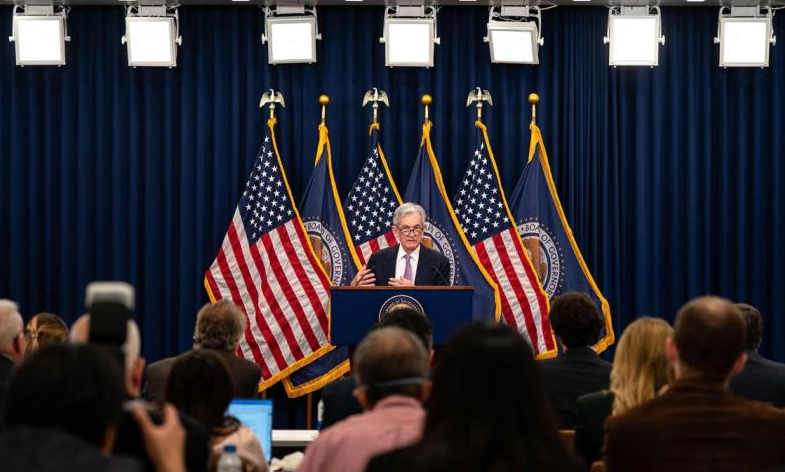
Before visiting China, Min Aung Hlaing reiterated his commitment to pushing for Myanmar to hold elections in 2025. Can Myanmar smoothly achieve political transition? Can it truly ride on the development of ASEAN and China’s Belt and Road Initiative? This will be a historic test for the Min Aung Hlaing administration.
Since the 2021 coup, Myanmar’s leader Min Aung Hlaing was recently invited to visit China for the first time, attending the 8th Mekong-Lancang Cooperation Leaders’ Meeting, the 10th Greater Mekong Subregion Economic Cooperation Summit, as well as the 11th Cambodia-Laos-Myanmar-Vietnam Summit. Accompanied by him were several high-ranking officials and provincial governors. This visit has garnered international attention, seen as a significant diplomatic breakthrough for the Min Aung Hlaing administration in the region, conveying confidence in regional security and democratic transition.
This move also signals to the outside world that the military group’s power has been consolidated. With a vast land area of 670,000 square kilometers, despite the ongoing crisis in northern Myanmar, most of the core regions of Myanmar are still firmly under the control of the military group. With an active military force of up to 550,000 personnel, the combined forces of various ethnic armed groups in northern Myanmar still appear significantly outmatched in terms of both manpower and equipment.
Min Aung Hlaing’s leadership team’s foreign visit this time also showcases to the outside world that the regime has passed the dangerous period since the military coup in February 2021. Considering the arrest of key figures like the former military leader Than Shwe’s aide and Minister of Propaganda and Presidential Spokesperson Ye Tut, as well as the recent detention of the former senior military leader Than Shwe’s son-in-law and former colonel Nay Soe Moe, the Min Aung Hlaing administration is also breaking free from the influence and control of the former military group. Additionally, Min Aung Hlaing has repeatedly demonstrated his ability to effectively lead and control the timetable for the upcoming elections in Myanmar.
Min Aung Hlaing’s Visit to China Intentions
Since the military coup by the Min Aung Hlaing administration, Myanmar has faced social unrest, economic downturn, intensified clashes with ethnic armed groups, the northern Myanmar phone scam incident, Western sanctions, and has been labeled negatively with terms like “terrorism, violence, drugs, poverty, phone scams, and organ theft.” One of the intentions behind Min Aung Hlaing’s visit to China is to showcase his effective control over Myanmar, improve the international image, and actively align with China’s development initiatives.
China also aims to further strengthen its strategic interests in Myanmar, especially regarding the various cooperation projects under the Belt and Road Initiative, such as the China-Myanmar Economic Corridor involving projects like the China-Myanmar Railway, oil and gas pipelines, Kyaukphyu Deep-Sea Port, and rare earth development.
The construction of the China-Myanmar Economic Corridor has faced challenges, including complex internal factors in Myanmar’s society and the political resistance from the military group that has historically been wary of Chinese influence. The project has been somewhat neglected due to these factors. In late 2018, under the leadership of former State Counselor Aung San Suu Kyi, the Myanmar Belt and Road Steering Committee was established, but with the political changes in 2021, the development of the economic corridor was put on hold by the Min Aung Hlaing administration.
Additionally, “Burmese nationalism” has led the military government to maintain a cautious stance towards external economic cooperation. There is a prevalent belief among Myanmar’s elite that Myanmar serves as a gateway for China to access the Indian Ocean, leading to a sense of superiority among the Burmese. This nationalist mindset has hindered Myanmar from aligning with its vast neighbor in the path of reform and missed opportunities in the global modernization process of the Third Industrial Revolution. Despite this, China has continued to develop into the world’s second-largest economy, leading in resource development, production, and consumption, without significant support from Myanmar as a gateway to the Indian Ocean over the past half-century.
The China-Myanmar Railway: A Shared Opportunity
At the end of 1995, then-Malaysian Prime Minister Mahathir proposed the concept of the “Pan-Asian Railway” at the fifth ASEAN Summit, suggesting the construction of a railway that transcends the Mekong River basin to connect ASEAN member countries with China, forming a wide economic cooperation circle. The China-Myanmar Railway is an important section of the western route of the Pan-Asian Railway and a memorandum of understanding was reached between China and Myanmar as early as 2011. The railway starts from Kunming in China, running south to connect to the deep-water port of Kyaukphyu in western Myanmar and the largest city of Yangon in Myanmar.
In 2017, China proposed the China-Myanmar Economic Corridor within the Belt and Road Initiative framework, using the China-Myanmar Railway as the basis to establish economic cooperation zones along the route. In 2022, the Dali-Ruili Railway within China was officially opened, marking the completion of the domestic section of the China-Myanmar Railway. However, the construction of the domestic section in Myanmar has yet to commence.
Many areas along the China-Myanmar Railway route are controlled by various armed groups in northern Myanmar. Starting from Ruili in China and heading south, the railway would pass through areas controlled by the Myanmar military, the Kachin Independence Army, the Ta’ang National Liberation Army, the United Wa State Army, and the Shan State Army, before reaching Mandalay under Myanmar military control. This route would involve passing through at least five major armed groups in Upper Myanmar (referring to the northern part of Myanmar).
Despite Min Aung Hlaing’s public commitment during his visit to China to resume construction of the China-Myanmar Railway and ensure the safety of Chinese personnel, institutions, and projects in Myanmar, it is doubtful that his promises can be fulfilled. A divided Myanmar would struggle to advance the completion of the China-Myanmar Railway and cannot ensure the security of China’s strategic western outlet to the sea.
The Pan-Asian Railway has made significant progress between China and other ASEAN member countries, with projects like the China-Laos Railway and the Jakarta-Bandung High-Speed Rail becoming flagship cooperation projects between China and ASEAN. Vietnam and Cambodia are also accelerating their railway connections with China. However, Myanmar has often been absent in deepening its participation in the Belt and Road Initiative and the development of the ASEAN “circle of friends.” This not only hinders Myanmar’s own economic development but also becomes a political burden for ASEAN, negatively impacting the overall image of ASEAN. In fact, Myanmar was even excluded from the ASEAN Summit in 2021.
Min Aung Hlaing’s historical choices will be put to the test. In 1936, Myanmar’s GDP reached a high of $1.2197 billion (approximately 163 billion new kyats), with a per capita income of $776 based on a population of 15.708 million at the time. In contrast, China’s per capita GDP was less than $100, and the United States had just over $600. Myanmar was truly Asia’s wealthiest nation at that time. However, 90 years later, Myanmar’s GDP stands at $76 billion, with a per capita GDP of only $1,407, about a quarter of Indonesia’s, lagging behind even Laos and Cambodia. By 2023, China’s per capita GDP had reached $12,700.
In 2024, Myanmar ranked 74th in the Global Hunger Index, indicating a moderate level of hunger. The report shows that 5.3% of Myanmar’s population is undernourished, 25.2% of children under the age of 5 suffer from stunted growth due to malnutrition, 6.6% of children are underweight, and the mortality rate is 4%. In today’s era of globalization and the Fourth Industrial Revolution, Myanmar’s society remains unfamiliar with these new technologies, stagnating at the level of a traditional agricultural country. The collaborative efforts of ASEAN member countries and the deep development of the China-Myanmar Economic Corridor will be crucial external forces for Myanmar to break free from poverty and move towards modernization.
Located in the tropics with abundant resources, Myanmar occupies one of the best pieces of land in mainland Southeast Asia. The tropical economic crops it produces are highly favored in the Chinese market. Additionally, Myanmar is rich in mineral resources, particularly producing jade, rubies, and sapphires, making China its largest exporter of gemstones and jewelry resources.
As of August this year, the China-Myanmar oil and gas pipelines have cumulatively transported over 100 million tons of crude oil and natural gas to China, bringing billions of dollars in economic benefits to Myanmar. At the same time, affordable goods from China continue to flow into Myanmar via the Yunnan-Myanmar Highway. As a Myanmar businessman put it, the United States is far away, but China is within reach and is the one that can help Myanmar.
Before his visit to China, Min Aung Hlaing reiterated his commitment to holding elections in Myanmar in 2025. Will Myanmar be able to smoothly undergo political transformation? Can it truly ride on the coattails of ASEAN development and the Belt and Road Initiative? These will be historical tests for the current authorities in Myanmar.
(Author is a researcher at the Sino-Korean Institute for Economic Development and a scholar specializing in Myanmar studies)









